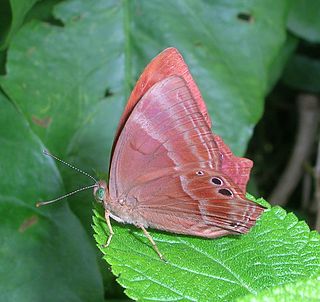
Abisara echerius, the plum Judy, is a small but striking butterfly found in Asia belonging to the Punches and Judies family (Riodinidae). It is difficult to distinguish it from Abisara bifasciata.

Polyura arja, the pallid nawab, is a butterfly belonging to the rajahs and nawabs group, that is, the Charaxinae subfamily of the brush-footed butterflies family.

Lampides boeticus, the pea blue, or long-tailed blue, is a small butterfly that belongs to the lycaenids or gossamer-winged family.

Smerinthus ocellatus, the eyed hawk-moth, is a European moth of the family Sphingidae. The species was first described by Carl Linnaeus in his 1758 10th edition of Systema Naturae.

Ypthima huebneri, the common fourring, is a species of Satyrinae butterfly found in Asia.
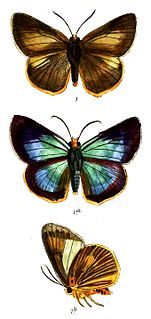
Bibasis harisa, the orange awlet, is a species of hesperid found in Asia. The butterfly was reassigned to genus Burara by Vane-Wright and de Jong (2003) and is considered by them to be Burara harisa.

Bibasis anadi, the plain orange awlet, is a species of hesperid butterfly found in India and Southeast Asia. The butterfly has been reassigned by Vane-Wright and de Jong (2003) to the genus Burara and is considered by them Burara anadi.

Creon is a monotypic butterfly genus in the family Lycaenidae. Its sole species is Creon cleobis, the broadtail royal, which is found in South Asia.
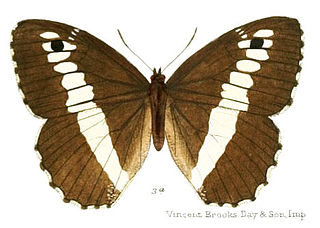
Aulocera saraswati, the striated satyr, is a brown (Satyrinae) butterfly that is found in the Himalayas.
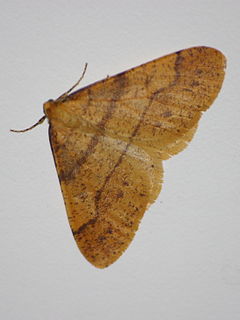
Agriopis aurantiaria, the scarce umber, is a moth of the family Geometridae. It was first described by Jacob Hübner in 1799 and it is found throughout Europe.

Erebia melampus, the lesser mountain ringlet, is a member of the subfamily Satyrinae of the family Nymphalidae.

Chaetolopha emporias is a moth of the family Geometridae. It is known from Australia, including Queensland and Tasmania.
Lepidochrysops aethiopia is a butterfly in the family Lycaenidae. It is found in Malawi, Zambia and northern Mozambique. The habitat consists of deciduous woodland, usually on small, rocky hillsides.

Lepidochrysops negus is a butterfly in the family Lycaenidae. It is found in Sudan and Ethiopia.

Eugoa basipuncta is a moth of the family Erebidae first described by George Hampson in 1891. It is found in southern India and on Java and Borneo, as well as in Taiwan, Japan, Thailand and Australia (Queensland).
Eugoa humerana is a moth of the family Erebidae first described by Francis Walker in 1863. It is found on Borneo, Peninsular Malaysia, Sumatra and Java. The habitat consists of forests.
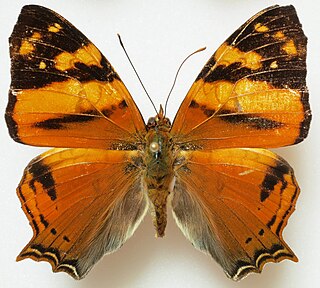
Hypanartia lethe, the orange admiral or orange mapwing, is a butterfly of the family Nymphalidae.

Nordstromia vira is a moth in the family Drepanidae. It was described by Moore in 1866. It is found in Myanmar, India, Nepal and China.
Epijana cosima is a moth in the family Eupterotidae. It was described by Plötz in 1880. It is found in Cameroon, the Central African Republic, the Democratic Republic of Congo, Equatorial Guinea, Gabon and Nigeria.
Podalia fuscescens is a moth of the family Megalopygidae. It was described by Francis Walker in 1856. It is found in Brazil.















